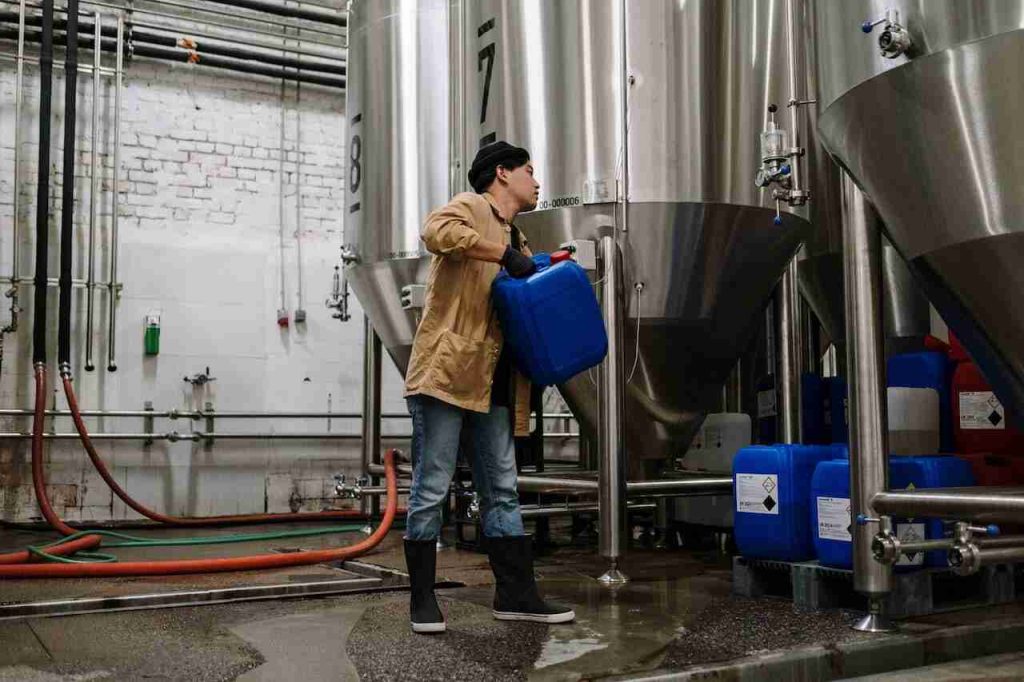The plastic manufacturing and car painting industries have marked important roles in our global economy. Innovations in technology and dynamic market demands allowed these sectors to grow and diversify.
Rapid growth in these industries is driven by the versatility and affordability of plastic products and the global increase in vehicle ownership necessitating car painting services. However, prosperity in these industries is not without hurdles.
These sectors face issues tied to environmental sustainability, technological updates, health risks, and more. As such, success in these fields calls for a keen awareness of the evolving industry dynamics and a commitment to overcoming the challenges.
Keys to Success in Plastic Manufacturing
To survive and prosper, businesses must adapt to the ever-changing landscape. In the plastic manufacturing industry, this means staying ahead of the following strategies.
Utilizing Advanced Technologies in Manufacturing
The future of plastic manufacturing lies in the efficient use of advanced technologies. Leveraging innovations like 3D printing, robotics, and automation can streamline operations and reduce waste. In particular, hot runner systems have proved impactful in boosting productivity and minimizing plastic waste.
Incorporating Sustainable Business Practices
Sustainability has become non-negotiable in modern businesses. The plastic manufacturing industry must emphasize the use of recyclable materials and implement aggressive waste reduction strategies, aiming for eco-friendly stewardship while meeting market demands.
Finding a Unique Selling Proposition (USP)
To secure a competitive edge, businesses need to find a unique selling proposition (USP). A compelling USP can help distinguish businesses and offer a distinct value to customers, giving an edge in an often crowded market.
Building Strong Relationships with Suppliers
Establishing robust relationships with suppliers forms a critical part of operational efficiency. Reliable partnerships ensure a consistent supply of high-quality raw materials, thus maintaining an unwavering production output, which can underpin a firm’s position in the industry.
Keys to Success in Car Painting
Achieving prosperity in business is a dynamic process requiring a proactive mindset. For those navigating the car painting industry, the path to success is easier with these key strategies.
Ensuring Quality of Services
The foundation of success in the car painting industry is to ensure unwavering quality. This encompasses the use of premium painting materials like touch-up paint, which is crucial for repairing minor chips, scratches, and blemishes on a vehicle’s surface. Simultaneously, staffing a team of skilled workers versed in high-quality craftsmanship is essential.
Diversification of Services
To draw in a diverse clientele, businesses should expand their range of services. Modern car painting businesses are about more than traditional services. They should also provide personalized painting options and restoration and repair painting services that meet a variety of customer needs, ensuring continued business growth.
Marketing and Branding Strategies
Building a strong digital footprint is paramount in the modern business landscape. Car painting businesses can leverage online platforms for effective advertising. Alongside, prioritizing exceptional service delivery helps foster lasting customer relationships, fortifying the brand identity and driving customer loyalty.
Challenges in Plastic Manufacturing & Car Painting
Navigating these growing industries does not come without its fair share of challenges. Both sectors grapple with obstacles that must be addressed for sustained growth.
Environmental Impact of Plastic Production
The production of plastic poses considerable environmental challenges. Plastics are generally non-biodegradable, leading to significant waste issues and potential harm to wildlife and ecosystems. Addressing the environmental footprint of plastic production is key for any responsible enterprise.
Health Risks Associated with Car Painting
Car painting comes laden with its own set of unique health challenges. Continuous exposure to harmful chemicals and solvents used in paints poses risks to employees’ health. Protecting workers and ensuring a safe working environment is imperative.
Constant Need for Technological Updates
Staying competitive in these industries demands keeping pace with ever-evolving technology. From advances in manufacturing processes to innovations in paint formulation and application, the obsolescence of technology can pose serious threats to businesses.
How to Overcome These Challenges
While formidable, the adversities faced by the plastic manufacturing and car painting industries aren’t insurmountable. Businesses can implement multifaceted approaches to effectively navigate these challenges.
Implementing Green Manufacturing Practices
Addressing the environmental impact of plastic production demands a shift towards greener manufacturing practices. This encompasses the use of recyclable materials, enhancing waste management systems, and finding eco-friendly alternatives to traditional manufacturing processes.
Ensuring Health and Safety in Car Painting
The health risks associated with car painting can be mitigated by implementing rigorous health and safety measures. This includes providing proper protective gear for employees, ensuring well-ventilated workspaces, and regular health check-ups for the workforce.
Staying Updated with the Latest Technologies
The constant need for technological updates can be tackled by staying attuned to technological advancements. Investing in modern equipment, upskilling the workforce, and incorporating new-age practices can ensure businesses remain competitive.
Forging Ahead for Industry Success
Navigating the robust growth and challenges of the plastic manufacturing and car painting industries requires insightful strategies and continued adaptability. Embracing sustainable practices, harnessing newly developed technologies, and retaining a razor-sharp focus on customer needs are non-negotiables. By doing so, businesses can chart a course toward innovation, profitability, and sustained success, making a significant impact in these dynamic industries.
